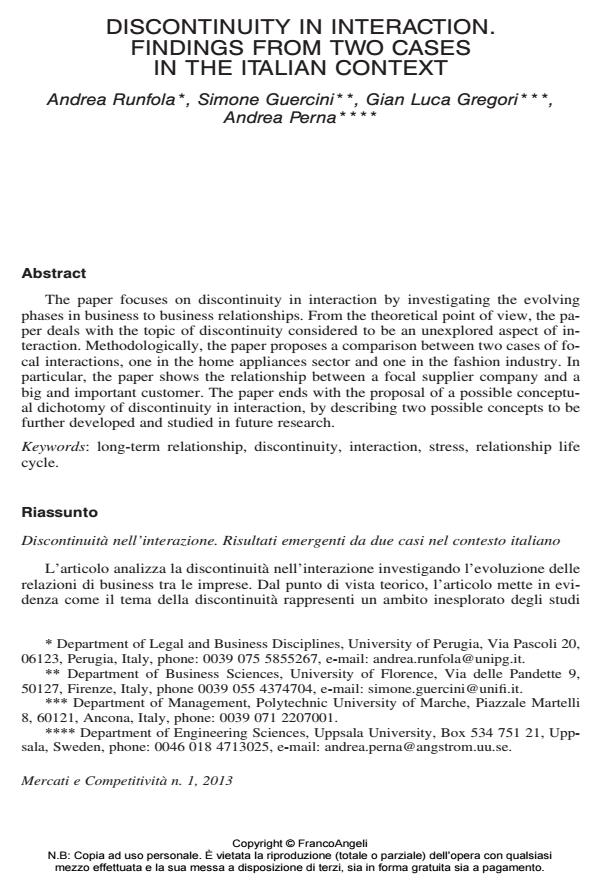Discontinuity in interaction. findings from two cases in the Italian context
Titolo Rivista MERCATI E COMPETITIVITÀ
Autori/Curatori Andrea Runfola, Simone Guercini, Gianluca Gregori, Andrea Perna
Anno di pubblicazione 2013 Fascicolo 2013/1
Lingua Inglese Numero pagine 20 P. 53-72 Dimensione file 550 KB
DOI 10.3280/MC2013-001005
Il DOI è il codice a barre della proprietà intellettuale: per saperne di più
clicca qui
Qui sotto puoi vedere in anteprima la prima pagina di questo articolo.
Se questo articolo ti interessa, lo puoi acquistare (e scaricare in formato pdf) seguendo le facili indicazioni per acquistare il download credit. Acquista Download Credits per scaricare questo Articolo in formato PDF

FrancoAngeli è membro della Publishers International Linking Association, Inc (PILA)associazione indipendente e non profit per facilitare (attraverso i servizi tecnologici implementati da CrossRef.org) l’accesso degli studiosi ai contenuti digitali nelle pubblicazioni professionali e scientifiche
The paper focuses on discontinuity in interaction by investigating the evolving phases in business to business relationships. From the theoretical point of view, the paper deals with the topic of discontinuity considered to be an unexplored aspect of interaction. Methodologically, the paper proposes a comparison between two cases of focal interactions, one in the home appliances sector and one in the fashion industry. In particular, the paper shows the relationship between a focal supplier company and a big and important customer. The paper ends with the proposal of a possible conceptual dichotomy of discontinuity in interaction, by describing two possible concepts to be further developed and studied in future research.
L’articolo analizza la discontinuità nell’interazione investigando l’evoluzione delle relazioni di business tra le imprese. Dal punto di vista teorico, l’articolo mette in evidenza come il tema della discontinuità rappresenti un ambito inesplorato degli studi sull’interazione. Metodologicamente, viene proposta una comparazione tra due casi di interazioni focali, una nel settore delle home appliances, l’altra nel comparto moda. In particolare, l’articolo presenta lo studio della relazione tra una impresa fornitrice ed un grande cliente. Come risultato di questa analisi, gli autori propongono una tassonomia della discontinuità nell’interazione, attraverso la descrizione di due possibili concetti da studiare e ulteriormente sviluppare in futura attività di ricerca.
Parole chiave:Business relationship, discontinuità, interazione, stress, ciclo di vita della relazione.
Andrea Runfola, Simone Guercini, Gianluca Gregori, Andrea Perna, Discontinuity in interaction. findings from two cases in the Italian context in "MERCATI E COMPETITIVITÀ" 1/2013, pp 53-72, DOI: 10.3280/MC2013-001005